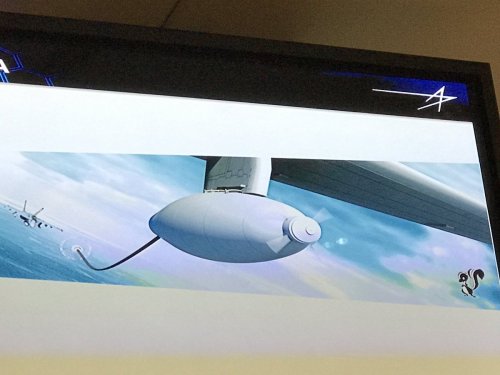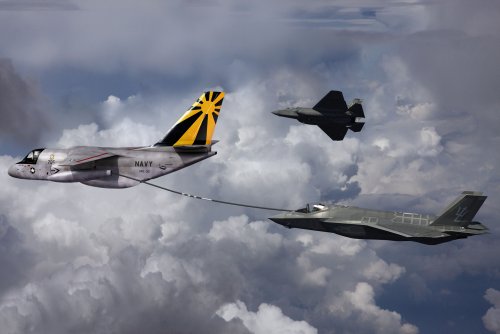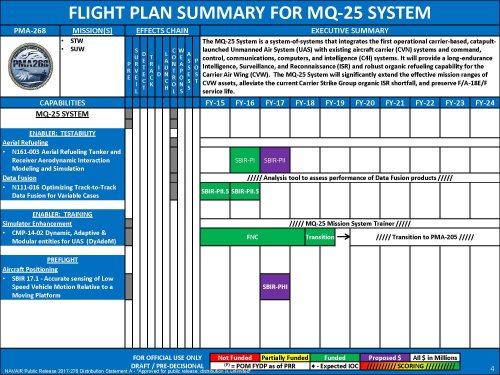The Navy has awarded another round of interim contracts to four eligible bidders in the MQ-25 program, a move intended to keep industry teams in place as the government this summer prepares to launch a multibillion-dollar competition to develop and field an unmanned logistics aircraft that promises to extend the combat reach of aircraft carriers.
On April 13, Naval Air Systems Command awarded Northrop Grumman, Boeing, Lockheed Martin and General Atomics contracts worth between $18 million and $25 million to refine their respective concepts for the MQ-25 Unmanned Carrier Aviation Air System.
The Navy expects the MQ-25 to reduce the need for F/A-18E/F Super Hornets to provide refueling, allowing the manned fighters to focus on strike missions and preserving service life for non-logistics activities.
The Navy awarded each of the defense companies contracts "to conduct additional risk reduction activities in support of the MQ-25 Unmanned Carrier Aviation Air System, including refinement of concepts and development of trade space for requirements generation in advance of the engineering and manufacturing development phase of the program," according to the contract announcements.
Northrop Grumman was awarded $24.7 million; Boeing, $19 million; Lockheed Martin, $18.8 million; and General Atomics, $18.7 million.
Last fall, the Navy awarded the four companies cost-plus-fixed-fee contracts valued between $35 million and $43 million to each of these companies to conduct risk-reduction activities, including concept refinement and requirements trade analysis.
The MQ-25 program is the progeny of the former Unmanned Carrier-Launched Airborne Surveillance and Strike program. In early 2016, following an extensive review -- overseen by the deputy defense secretary -- of the intelligence, surveillance and reconnaissance portfolio, the UCLASS program was restructured into the Carrier Based Aerial Refueling System, which the Navy then rebranded MQ-25.
This outcome was the result of a debate within the Defense Department over whether the new weapon system should focus on surveillance with limited strike or be optimized for strike capability with a limited surveillance role.
The MQ-25 will have an aerial refueling capability with some ISR capability.
"According to Navy officials, provisions will be incorporated for potential future strike capabilities, but requirements for initial operating capability -- expected by the end of fiscal year 2026 -- will focus on refueling and ISR capabilities," a Government Accountability Office report on selected weapons acquisition programs, published in March, states.
The MQ-25 is expected to be composed of an air segment, an aircraft carrier segment, and a control-and-connectivity segment.
The Navy's fiscal year 2017 budget request, submitted in February 2016, indicated plans to publish a request for proposals for the air vehicle segment during the first quarter of FY-17 -- between October and December of last year. The GAO last month, citing information from the Navy program office, said the request for proposals for the engineering and manufacturing development of air vehicles is now expected this summer.















